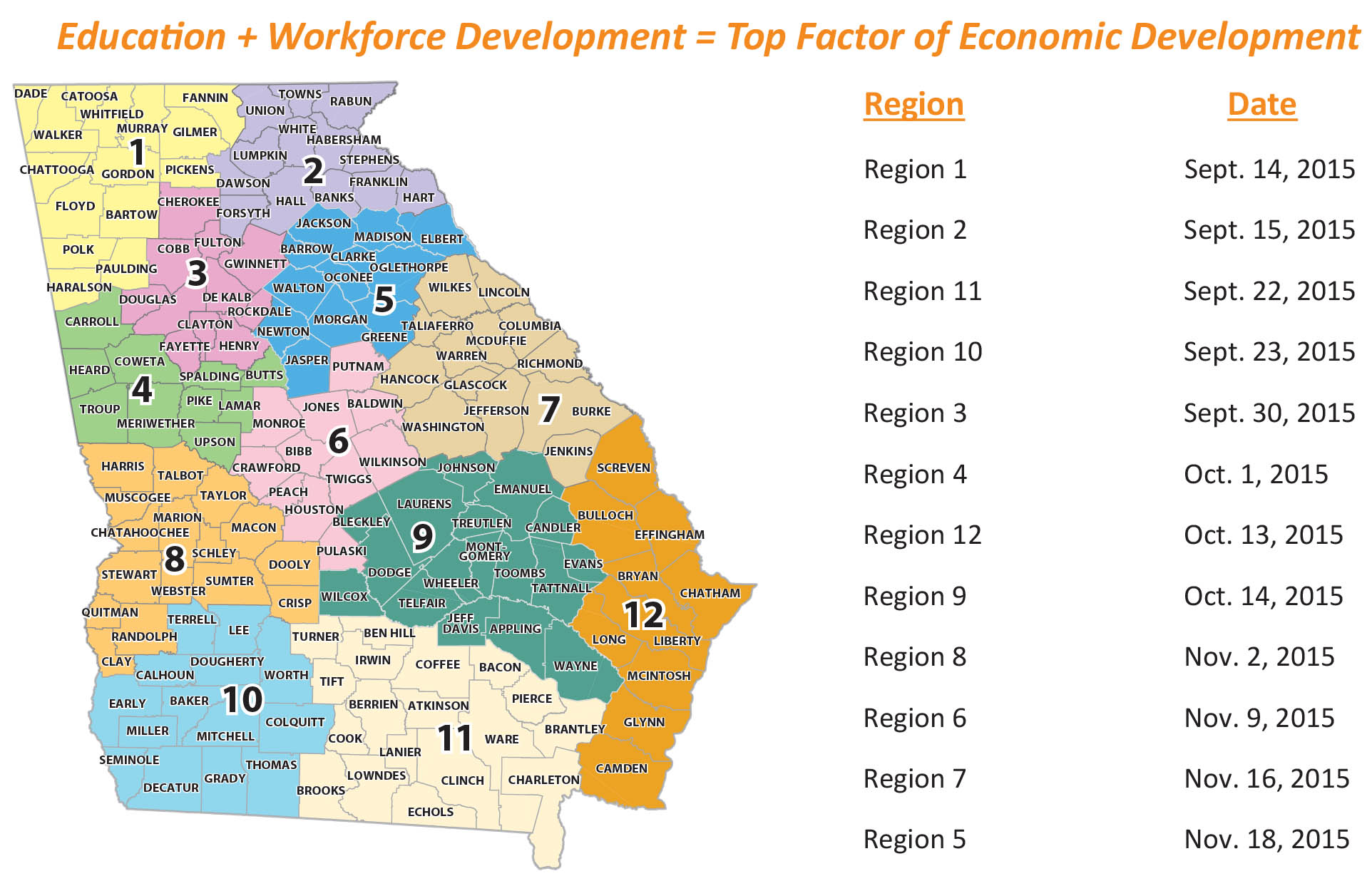Welcome to the Georgia Pathways to Prosperity website!
Georgia has taken big steps forward in recent years in the areas of economic and workforce development. State policies have been put in place that support the efforts of local communities to work collaboratively to develop and implement grades 9-14 career pathways aligned with state and regional workforce needs. In 2013, Georgia became a member of the Pathways to Prosperity Network, a collaboration of member states, the Boston-based nonprofit Jobs for the Future, and the the Harvard Graduate School of Education. The Pathways to Prosperity Network seeks to ensure that many more young people complete high school and attain postsecondary credentials with value in the labor market. Each participating state is engaging educators and employers in building a system of grades 9-14 career pathways, combining high school and community college, that launches young people into initial careers while leaving open the prospect of further education. In Georgia, the Pathways to Prosperity work is being led by a state-level cross-agency team that includes the Georgia Department of Education, the Technical College System of Georgia, the University System of Georgia, and the Georgia Department of Economic Development.
.jpg) Created by Jobs for the Future, this toolkit is designed to serve as a guide for community and regional leaders throughout Georgia. The toolkit provides resources and guidance about identifying workforce needs, aligning K-12 and higher education curricula with workforce development efforts, and offering students in grades 9-12 work-based learning and dual enrollment opportunities. The toolkit is organized to serve newcomers to career pathway work and those with prior experience but seeking to learn more. It is also a resource for those seeking effective models on specific topics, such as building business/industry/education partnerships and developing work-based learning models. The tools, resources, and examples were developed by practitioners in workplaces and educational institutions, and by technical assistance and documentation specialists working closely with the practitioners. These resources and examples originate in a variety of employment sectors and are readily adaptable to other work settings and occupations.
Created by Jobs for the Future, this toolkit is designed to serve as a guide for community and regional leaders throughout Georgia. The toolkit provides resources and guidance about identifying workforce needs, aligning K-12 and higher education curricula with workforce development efforts, and offering students in grades 9-12 work-based learning and dual enrollment opportunities. The toolkit is organized to serve newcomers to career pathway work and those with prior experience but seeking to learn more. It is also a resource for those seeking effective models on specific topics, such as building business/industry/education partnerships and developing work-based learning models. The tools, resources, and examples were developed by practitioners in workplaces and educational institutions, and by technical assistance and documentation specialists working closely with the practitioners. These resources and examples originate in a variety of employment sectors and are readily adaptable to other work settings and occupations.


